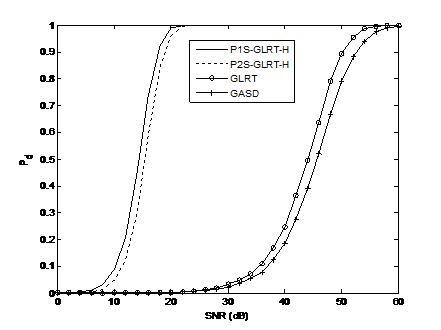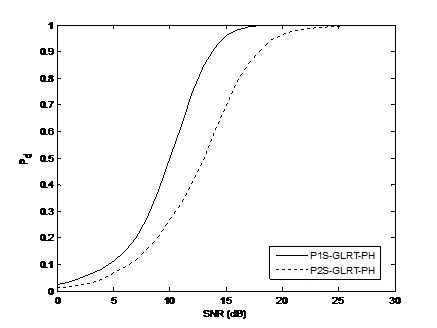In recent years, the design of space-time adaptive detection algorithms has received a vibrant attention from the radar community. Most of the existing approaches assume the homogeneous environment. Unfortunately, in practical scenarios, the secondary data are often contaminated by power variations over range, clutter discretes, and other outliers. A possible mean to circumvent this aspect is to exploit the structural information of the disturbance covariance matrix.
HAO Chengpeng, MA Xiaochuan, YAN Shefeng and CAS member HOU Chaohuan from the State Key Laboratory of Acoustics, Institute of Acoustics, Chinese Academy of Sciences, China, and Danilo Orlando and Goffredo Foglia from the ELETTRONICA S.p.A., Via Tiburtina Valeria, Italy deal with the problem of detecting distributed targets in the presence of Gaussian noise with unknown but persymmetric structured covariance matrix.
In this research, two persymmetric detectors resorting to the generalized likelihood ratio test (GLRT) and the so-called two-step GLRT are proposed, which guarantee the constant false alarm rate property with respect to both the structure of the covariance matrix as well as the power level. The performance assessment is carried out by means of both simulated data and real recorded data. More precisely, the numerical examples on simulated data show that the proposed detectors exhibit better detection performances with respect to their unstructured counterparts, as shown in Fig. 1. The superior performances are confirmed by the analysis on recorded live data, as illustrated in Fig. 2.

Fig.1 Pd versus signal-to-noise ratio (SNR) with simulated data (Image by HAO).

Fig.2 Pd versus SNR with IPIX (Image by HAO).
This research was supported by National Natural Science Foundation of China under Grant Nos. 61172166 and 61222107.
The research entitled “Persymmetric Adaptive Detection of Distributed Targets in Partially-homogeneous Environment” has been published on the recently issued Digital Signal Processing (vol. 24, No. 1, January 2014, pp. 42–51).
Contact:
HAO Chengpeng
Institute of Acoustics, Chinese Academy of Sciences, Beijing, 100190, China
Email: haochengp@mail.ioa.ac.cn


